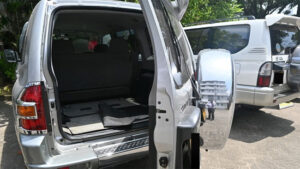Sri Lanka has submitted a roadmap to the International Monetary Fund (IMF) aimed at relaxing vehicle imports, as the country rebounds from its most severe currency crisis in central bank history, State Minister of Finance Ranjith Siymabalapitiya said.
The proposed import relaxation will prioritize vehicles for public and goods transport, followed by motorcycles and cars for private use, with luxury cars attracting the highest import taxes, Minister Siyambalapitiya noted.
Economic analysts have criticized vehicle import controls as a ‘cascading policy error,’ following inflation rate cuts that reduce state revenue, leading to increased money printing and forex shortages. This, in turn, necessitates higher interest rates and economic activity contractions to stabilize the rupee.
According to the latest IMF report, car import restrictions may have cost the government between 0.7 to 0.9 percent of GDP in lost revenue.
Sri Lanka began implementing import controls shortly after establishing its central bank in 1950, progressively tightening exchange regulations. Critics argue these measures are influenced by outdated monetary theories, leading to excessive money printing to artificially lower interest rates.
Minister Siyambalapitiya highlighted Sri Lanka’s collaboration with the IMF on various issues, including the roadmap submitted on June 14. The IMF, despite some criticisms of its policies, does not endorse import controls as a solution to balance of payments issues, analysts note, citing its focus on current account deficits in countries with reserve-building central banks.
Import controls are likened to import substitution policies, which classical economists argue do not address balance of payments concerns effectively, especially in economically challenged countries.
Past pressures on the currency and missed reserve targets under IMF programs have historically stemmed from excessive money printing to suppress interest rates amid heightened credit growth from vehicle imports.
From 2020 to 2022, Sri Lanka imposed controls on over 3,000 imported items, using printed money to suppress rates, ultimately leading to the country’s worst currency crisis and eventual external default.”
This version aims to clarify and streamline the original text for readability and coherence.



















